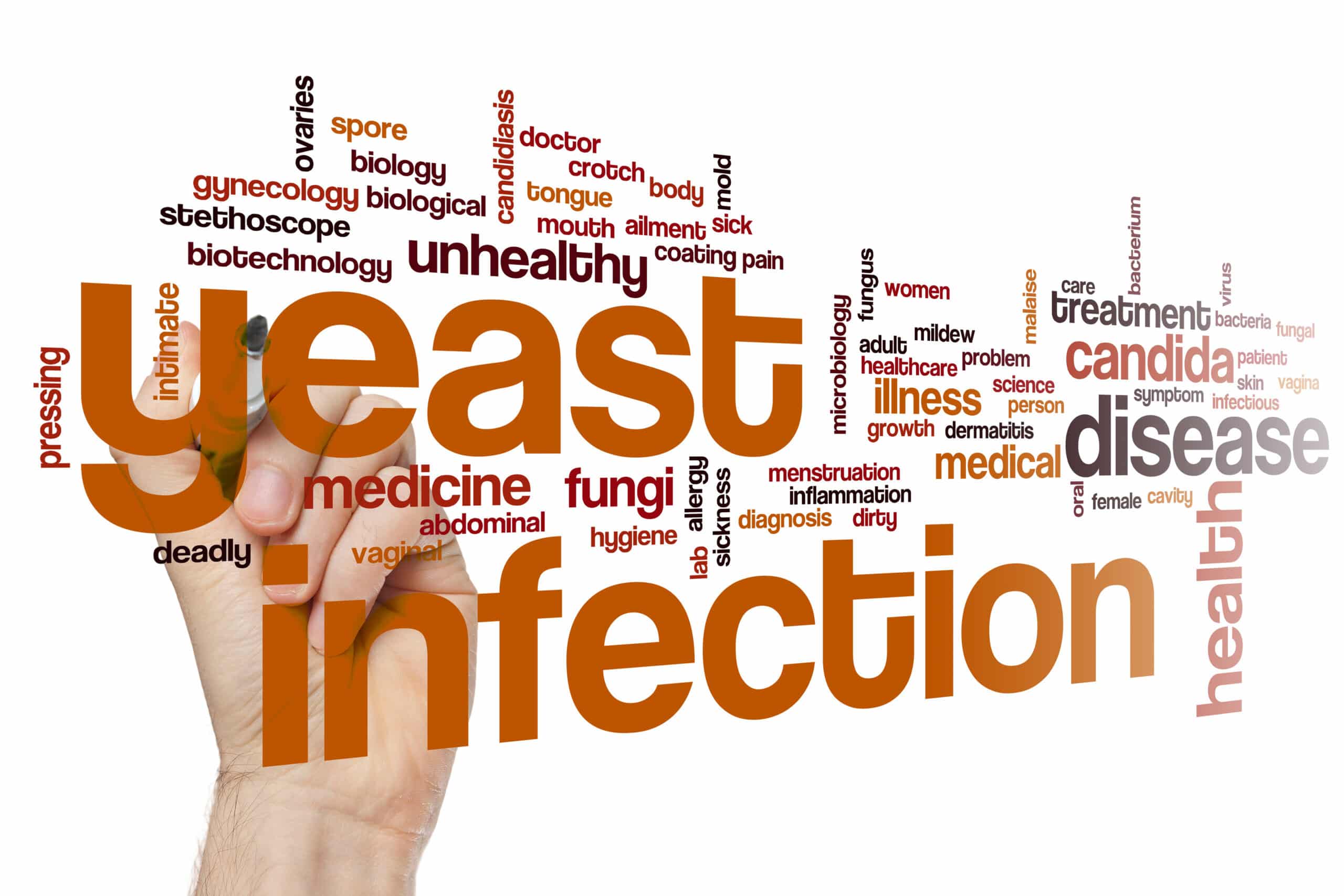A yeast infection is not limited to just the genitals, an infection of the mouth is called thrush/oral candidiasis, and cutaneous candidiasis is a yeast infection of the skin. When a yeast infection affects the penis it is called candidal balanitis or balanitis thrush. Balanitis refers to an infection of the glans penis, which is the head of the penis, if the yeast infection also affects the foreskin it is known as candidal balanoposthitis.
According to a report published in the journal Clinical Microbiology Reviews, candida yeast are responsible for 30-35% of all cases of balanitis. Other infectious sources include streptococci, staphylococci bacteria, Herpes simplex virus, human papillomavirus and Mycoplasma genitalium. Although infection is not uncommon, candida balanitis is not very well studied, so it is unclear how many men are affected by it each year.
Various candida species can live in the gastrointestinal tract and other warm areas of the body without causing illness, they only cause issues when present in large numbers. It is estimated that close to 20% of women have candida living in their vagina and are not experiencing any symptoms of yeast infection, according to a report published in the journal The Lancet.
Candida is also commonly found on the penis, some studies suggest that 16-26% of men are carrying the yeast with around 37% of men with candida not experiencing any symptoms, while 27% will develop balanitis, according to a study of attendees to a clinic for sexually transmitted diseases published in PubMed.
Penile yeast infections can be sexually acquired after having sex with another person who has a yeast infection. However, candidal balanitis is not considered to be a sexually transmitted disease because a man can get this infection without having sex.
Several risk factors can increase a man’s risk of getting a penile yeast infection which includes but is not limited to antibiotics that kill off good bacteria keeping candida in check, an immunosuppressive illness, diabetes, and corticosteroids. Additionally, yeast colonization and infection are more common among men who are uncircumcised, as the warm and moist environment underneath the foreskin can promote the growth of yeast.
Candidal balanitis was strongly associated with being over the age of 40 and diabetes as well as men older than 60 being more likely to have candida colonization according to a report published in the Journal of European Academy of Dermatology and Venerology.
Hygiene may also play a role in the development of candidal balanitis as washing with perfumed shower gels/soaps can irritate the skin to potentially help candida multiply.
Common symptoms of cadidal balantis include but are not limited to redness and swelling, pain during urination or sex, burning/itching around the head of the penis which can worsen after sex, and small rash like bumps which may have pus.
A thick lumpy discharge under the foreskin, and unpleasant odor of the foreskin, and difficulty pulling back the foreskin may accompany a candidal balanoposthitis infection.
Those with diabetes may experience more severe symptoms which can include fluid buildup and ulceration of the penis, as well as fissuring of the foreskin.
Although rare men can also experience complications with balanitis which may include an inability to retract the foreskin, inflammation of connective tissue beneath the skin, and narrowing of the urethra making it difficult to urinate.
Penile yeast infections are typically easily treated with antifungal azoles drugs of which there are a number of prescription and over the counter topical medicines available such as Lotrimin/clotrimazole, Monistat/miconazole, and Spectazole/econazole. Some cases may combine drugs with hydrocortisone to help reduce marked inflammation.
It is important to remember that topical oil based medications are not to be used with latex condoms. As such there is an alternative oral azole medication called Diflucan/fluconazole which is also effective for yeast infections.
If oral or topical treatments are not working for a yeast infection it is very important to see your primary care provider or certified medical professional as you may have contracted another kind of balanitis or an infection by a candida species that is resistant to azole antifungals.




